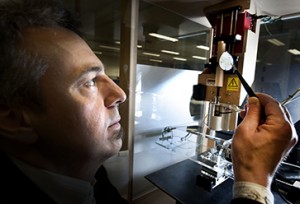Queensland University of Technology (QUT), along with the University of Wollongong, the University Medical Centre Utrecht in the Netherlands and the University of Würzburg in Germany, will offer international masters degree in biofabrication — a process of regrowing human tissue using 3D printers that can be used to repair cartilage, bone, muscles, nerves and skin that have been damaged by trauma, disease or cancer.

Image credit: www.qut.edu.au
According to the news release, QUT’s biofabrication research is already well-advanced in printing 3D custom-made scaffolds using bio-ink infused with the patient’s stem cells to enable the body to grow a new breast after mastectomy.
Chemistry, physics, biology, medicine, robotics and computer science graduates are encouraged to apply for the masters degree and take an advantage of the opportunity to be at the forefront of an industry that will always be in high demand.
“This degree is a vital step in ensuring Australia is a high-value, high-tech manufacturer in the future. Each of the four universities has established a track record in key areas of biofabrication, including polymer chemistry, cell biology and clinical implants,” said QUT Institute of Health and Biomedical Innovation‘s Professor Dietmar W. Hutmacher, the leader of QUT’s biofabrication research.
The applications of 3D technology could end the need for organ donations, reveals an article on The Brisbane Times.
“That is the big, big, big vision, but to be realistic we are far away from regenerating a complete organ with this technology. Part of an organ? Yes, that’s possible in the next five to 10 years, but a complete heart is still far away. The big question mark over why it will take so much longer is we also need to control and direct the biology,” said Professor Hutmacher.
Professor Hutmacher said a more immediate application of the technology was the use of 3D-printed biodegradable scaffolding to create replacement bones for patients, as well as breast reconstruction for cancer patients.
“The surgeon would implant the scaffold, use liposuction to suck fat tissue from another part of the body and fill the scaffold all in one operation. Two or three years later, the scaffold would be completely degraded and the breast would be regenerated. It’s really important with an education program like this to really stimulate the young guns in Australia to move into this area,” he said.
“In all the discussions now about the manufacturing industry in Australia, we see a great chance to create engineers in this biofabrication space, which will have a very unique education in a cutting edge area that will be very hard to replicate in other countries.”
The universities will each admit 10 students; the Australian students will spend 9 to 12 months studying at one of the European universities and the European students will study at one of the Australian universities.




















